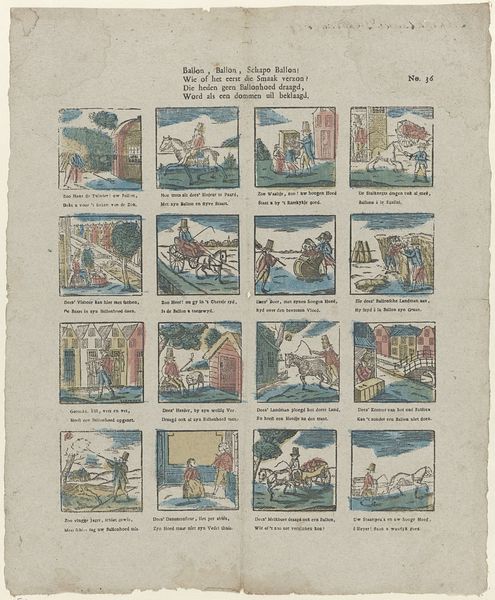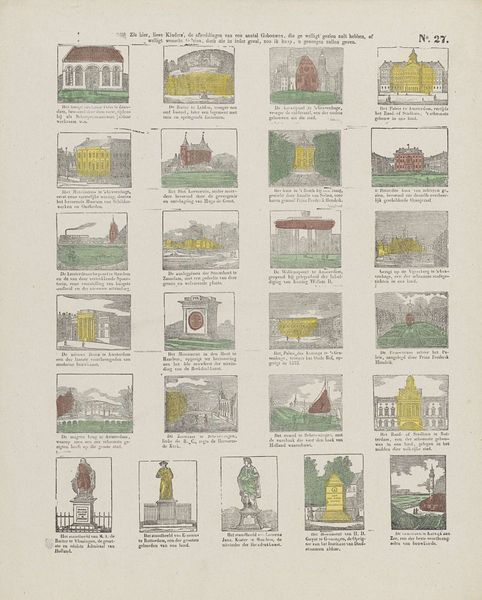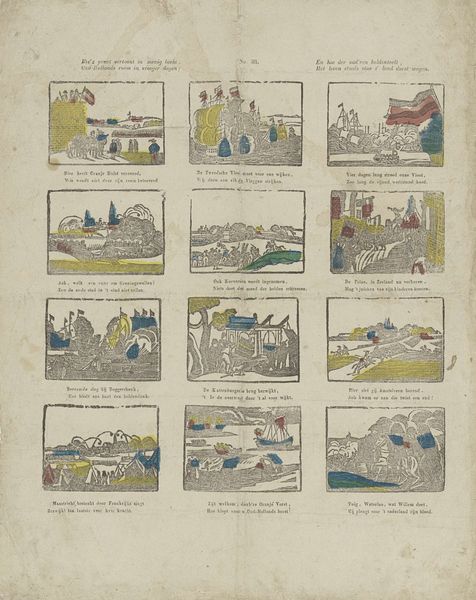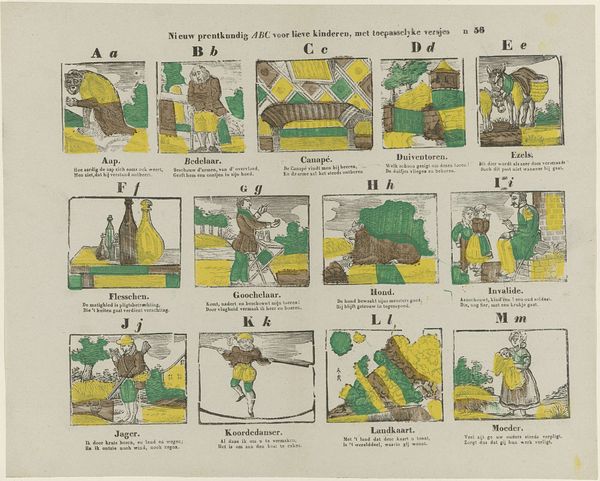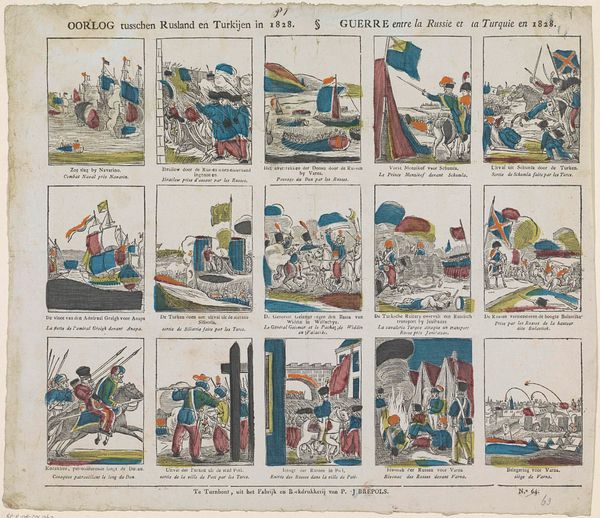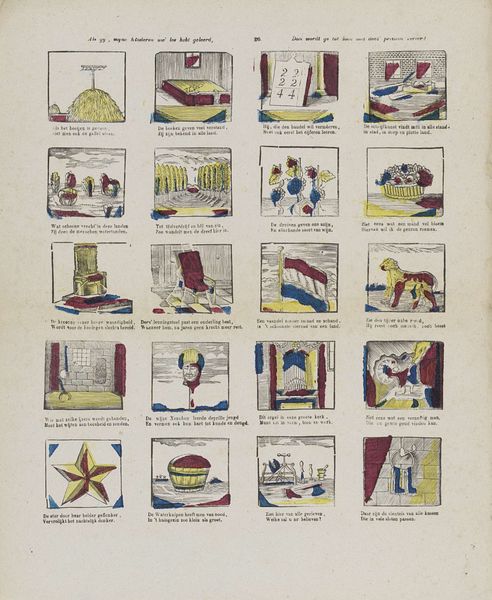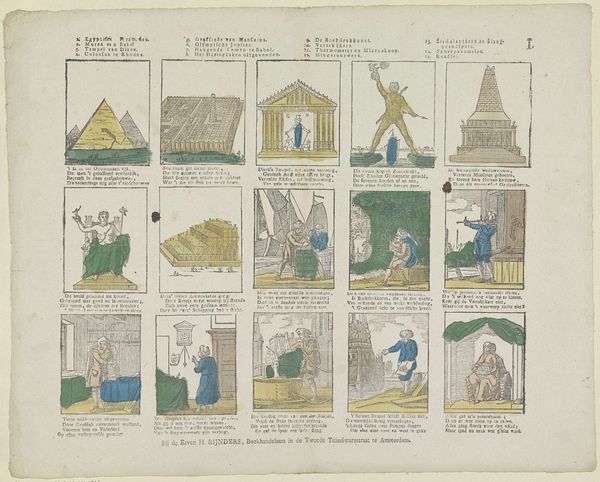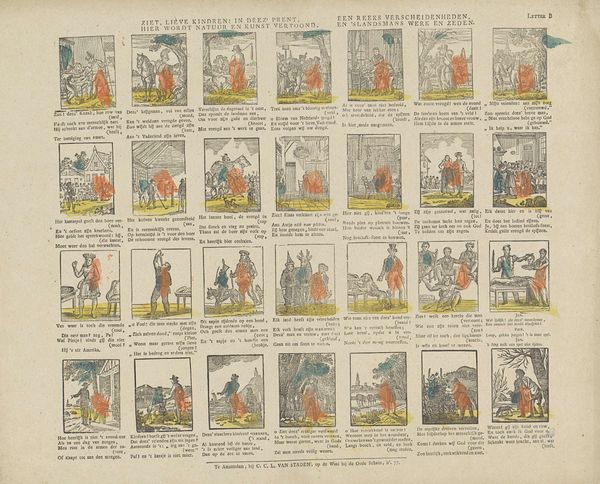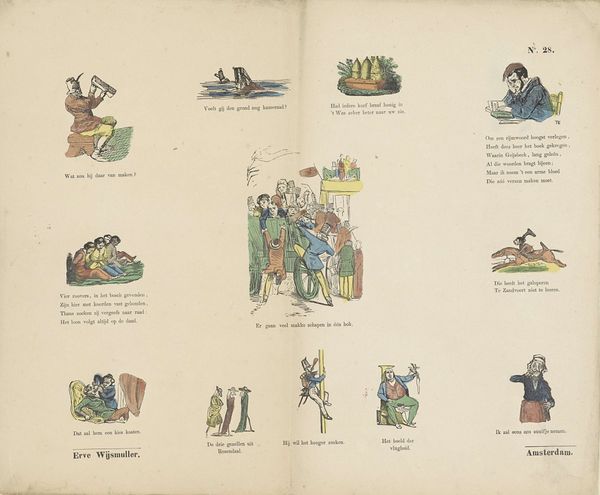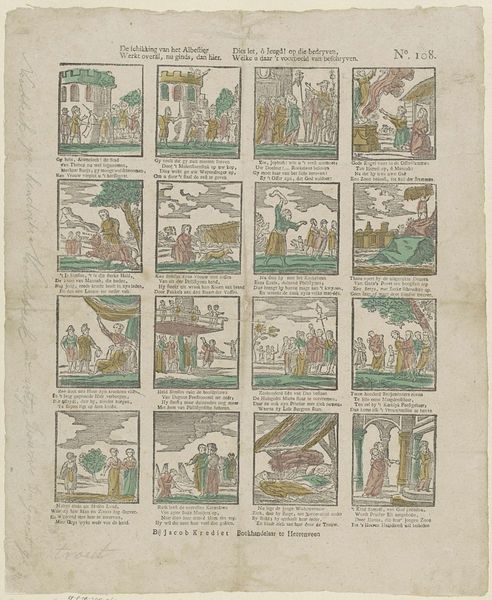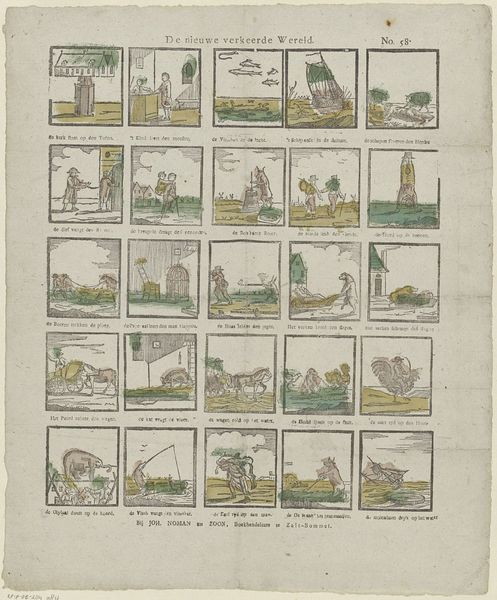
Gij hebt hier, lieve jeugd, als 't ware een galerij. / Van bouwkunst, om uw oog op 't nuttigst te vermaken; / Dat u dezelve mede een nieuwe waarborg zij, / Hoe men in Nederland steeds bleef voor kunstmin blaken 1822 - 1870
0:00
0:00
graphic-art, print, engraving
#
graphic-art
#
dutch-golden-age
# print
#
cityscape
#
history-painting
#
engraving
Dimensions: height 335 mm, width 413 mm
Copyright: Rijks Museum: Open Domain
Curator: At first glance, this piece titled "Gij hebt hier, lieve jeugd, als 't ware een galerij. / Van bouwkunst, om uw oog op 't nuttigst te vermaken; / Dat u dezelve mede een nieuwe waarborg zij, / Hoe men in Nederland steeds bleef voor kunstmin blaken," looks like a sampler, almost like a textile. The engraving’s division into discrete, labelled boxes gives it a sense of modularity, perhaps mass-produced? Editor: It does strike me as quite regimented. So many tiny scenes, all rendered in what looks like similar printmaking techniques. There’s a uniformity of labor involved, a repetitive action evident in each miniature cityscape. But, as the title indicates, it's also pedagogic in intent. Curator: Exactly. Willem Bal created this print sometime between 1822 and 1870. It presents a survey, effectively a gallery in print, for the young people of the Netherlands. A chance to absorb images of Dutch architecture and national identity. Note the even distribution between urban architecture and commemorative statuary, with short poems describing each location. Editor: So, its production and intended consumption points towards its purpose: as both an educational tool and as an artifact manufactured for mass distribution among the educated class in Netherlands. You could probably learn a lot about changes in printing practices by tracing where it was sold! What district in Amsterdam produced this sort of thing, and how were images circulated alongside it? Curator: It’s a testament to the values attached to art and architecture in shaping national character and civic virtue. It showcases the role art was seen to play in constructing a collective history. Note how all the monuments represent significant achievements! Editor: Which in turn emphasizes a national narrative constructed from significant people and moments within that history. Were these depictions drawn from pre-existing paintings or even illustrations within popular publications? How was artistic and architectural imagery translated into common printed material? Curator: I think that really brings home how this print reflects the societal emphasis on the educational role of art. A tool of nation-building! Editor: And that interplay, between pedagogy and patriotism, helps us to unpack not just what’s being shown, but how such prints became so culturally vital at the time.
Comments
No comments
Be the first to comment and join the conversation on the ultimate creative platform.

